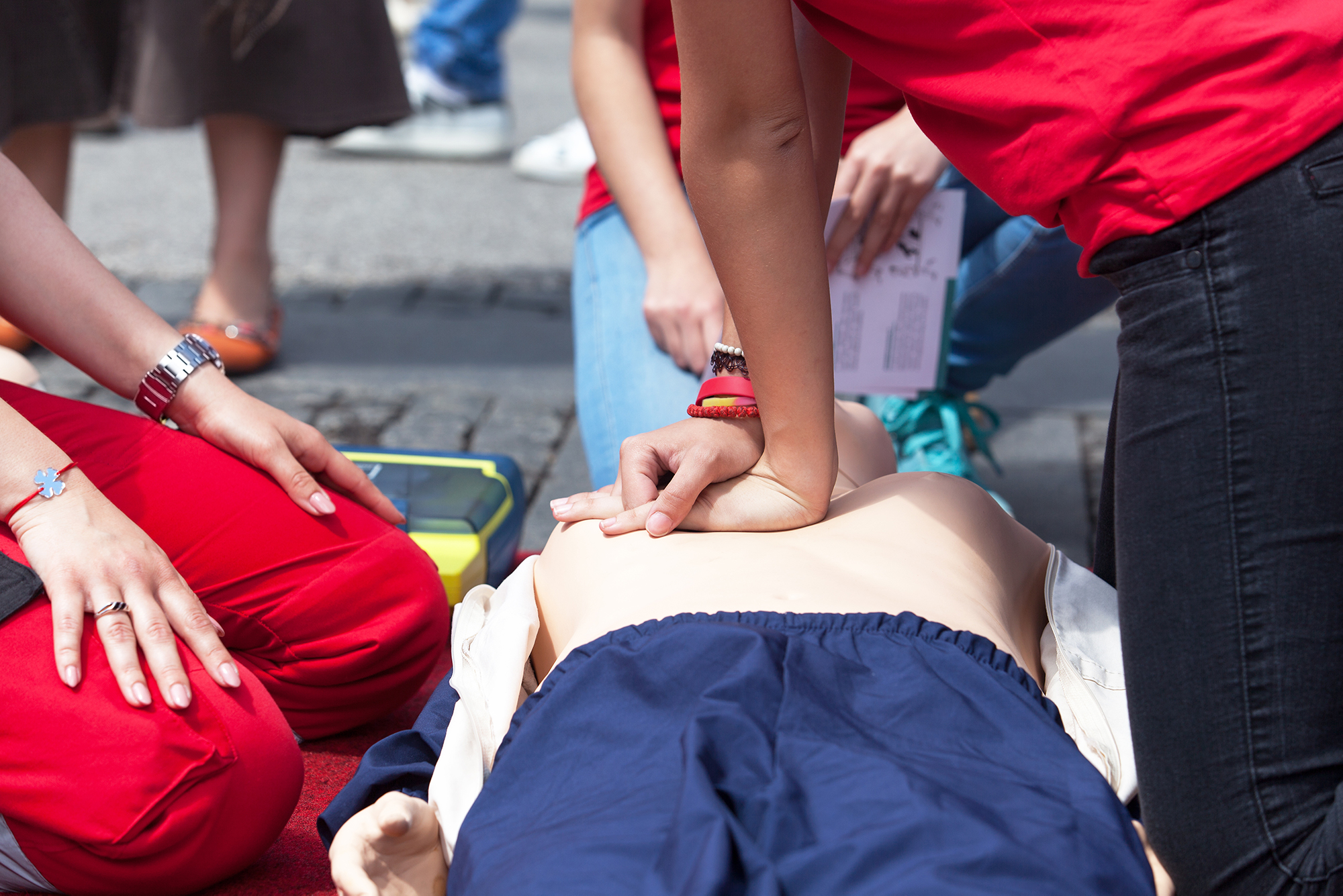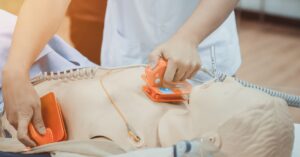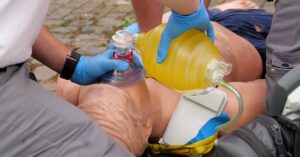According to recent stats, more than 70% SCA or Sudden Cardiac Arrests occur at home or similar private settings.95% of Sudden Cardiac Arrest victims die prior to even reaching the hospital. Out of all these numbers, only 6% survive cardiac arrest. Therefore, getting trained and acquainted with the basics of CPR and learning how to perform CPR will help you save life of a loved one.
You don’t need to be a professional to help save a life.
Cardiac arrests are not uncommon medical emergencies. They can occur at any time and any place. Even an individual who might appear to be healthy can suffer from a cardiac arrest or similar condition. Furthermore, cardiac arrest and heart attack are not same conditions. Sudden cardiac arrest does not occur out of any severe heart condition. It can occur out of electrical impulses, severe injuries etc. Therefore, it will be helpful for not only you but others around you, to learn at least the basics of CPR and techniques of performing the same on victims, irrespective of gender or age.
“We think it should be a basic life skill,” such as knowing to call 911 when there’s a fire, said Dr. Clifton Callaway, a professor and executive vice chair of emergency medicine at the University of Pittsburgh.
He gives this simple guidance: If someone is unconscious and does not appear to be breathing properly, it’s time to start CPR chest compressions.
But, what is a Cardiac Arrest?
Cardiac arrest is when the heart stops beating. Some 350,000 cases occur each year outside of a hospital, and the survival rate is less than 12 percent. CPR can double or triple the chances of survival.
Seventy-percent of cardiac arrests happens in homes, but for those that happen in a workplace, a recent American Heart Association survey found that most U.S. employees are not prepared for a cardiac emergency.
Who will help us?
Cpr123.com is a certified training center by the American Heart Association. It has basic courses that can teach you as an individual the skills needed for basic CPR and AED use. And now that you have a target, you can learn so many new things improving your knowledge and making you become a hero in these extreme situations.
For years, performing CPR meant checking the airway and doing mouth-to-mouth resuscitation in addition to chest compressions. Experts now advise chest compressions alone can keep the heart pumping and maintain blood flow for a few minutes until emergency workers arrive.
What I need to do?
Hands-only CPR is part of an effort to get more people to take action. The steps are: Call 911 and immediately begin chest compressions when someone is unconscious and having difficulty breathing. If you need guidance, an emergency operator can explain what to do. Using a cell phone, it may be possible to perform CPR and speak with the 911 dispatcher at the same time.
For adults and teens is best suite Compression-only CPR. You should press hard and fast in the center of the chest, down at least 2 inches with the full weight of your body.
The optimum rate of compression is 100 to 120 beats per minute. It may come naturally, but if you need help gauging it, thinking of a song may help.
“Stayin’ Alive,” by the Bee Gees is the right tempo. “Girls Just Want To Have Fun” by Cyndi Lauper or “Should I Stay or Should I Go?” by the Clash also is in the 100 to 120 beats-per-minute ranges.
These are three main reasons someone may be hesitant to perform CPR, said Callaway, a volunteer on the AHA’s Emergency Cardiovascular Care Committee:
- Yo don’t need to recognized CPR. If a person is unconscious and breathing abnormally, even if it’s a suspected drug overdose, begin CPR.
- You’re not trained and you worry you might hurt the person. But it’s better to help than do nothing. Don’t be afraid to apply pressure.
- For family members, assisting in an emergency is stressful. Some people report they “freaked out,” Callaway said. But a 911 dispatcher can help refocus and get you going.
Technology is contributing in other ways, too.
In some cities, volunteers who know CPR, such as doctors or off-duty medics or police officers, are signing up to be paged via a mobile app if someone is suffering cardiac arrest nearby.
But anyone can – and should – perform CPR, Callaway said. “Doing something is the right thing to do. It can only help.”
You can learn more about how to perform in extreme situation enrolling in the Heartsaver CPR AED course for non professionals and be ready for any circumstance.
Source: American Heart Association







